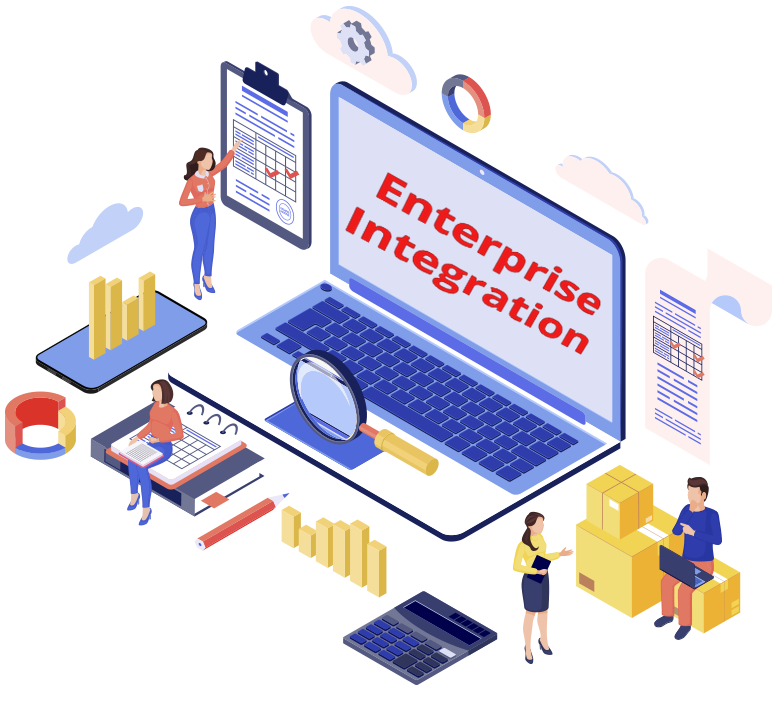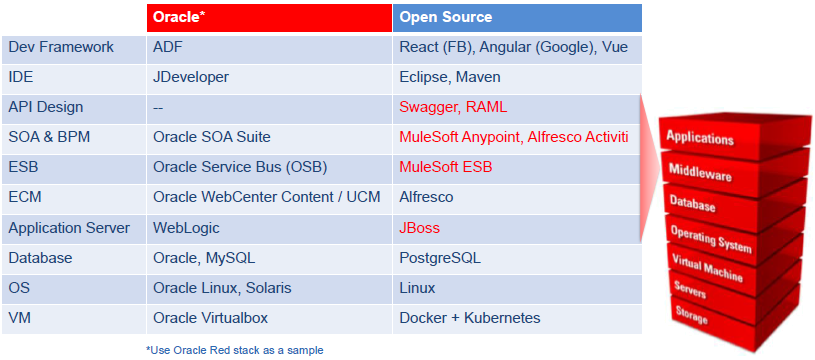During past two decades, I worked for Oracle, Accenture, Deloitte and involved clients from different industries, including consulting, forestry, finance, healthcare, retails and government agencies, what I observed was their IT environments are more and more complex and expensive, hard to manage and maintain. To simplify IT and reduce cost become strong demands from business.

In enterprise environment, Enterprise Application Integration (EAI) is outstanding since the IT environment is changing quickly with the continuous procurement and integration of new systems. The purpose of this article is to provide the perspectives on middleware selection, approaches and tools, and enterprise integration strategies.
A few key principles of enterprise integration:
- Build SOA-based IT architecture
- Choose main stream technologies, prefer open source
- Keep on-premise option open
- Avoid vendor lock-in
First, we need choose the right ESB. As discussed in previous article Enterprise Integration: Choosing the Right ESB Solution, there are three types of ESB:
- Integration Framework, e.g. Apache Camel, Spring Integration
- ESB, e.g. Apache ServiceMix; Red Hat JBoss Fuse; Talend Open Studio, MuleSoft ESB, Oracle ESB and TIBCO, etc
- Integration Suite, e.g. Talend Open Studio; WSO2 ESB, Oracle SOA Suite, TIBCO etc..
Among these products, MuleSoft ESB is a popular ESB with visual designer Mule Anypoint Studio, open source, proprietary, ranked No. 1.
Second, let’s have a look at enterprise integration technology stack, comparing open source with Oracle Red Stack:

We may see open source solutions are well-accepted by organizations over past few years. They cover every catalog in middleware market. SOA, RESTful based micro-services, Sprint Boot are the main stream. BPM is useful in point-based workflow integration and automation. Alfresco Activiti is highly recommended as a BPM tool.
In previous article Enterprise Integration: API Management Vendors Landscape, it includes the API Landscape diagram which shows MuleSoft is also in a key position in Service Registry, API Management and Interface Modeling market. Except MuleSoft Anypoint Platform, SmartBear offers Swagger, open source community contributed Atom plus API Workbench and API testing tool Postman.
Third, let’s review DevOps practices and toolbox:
- Infrastructure as Code
- Development: Eclipse, MuleSoft, Spring Boot
- Application Server: JBoss
- Continuous Integration: GitHub, GitLab, Maven, Sonatype Nexus, Jenkins
- Continuous Deployment: Sonatype Nexus, Jenkins, Docker, Kubernetes
- Automated Testing: Selenium, OpenCV
- Release Management: Sonatype Nexus, Jenkins
- App Performance: AppDynamics
- Load Testing
- Auto-scale: AWS, Azure
So what’s the strategies of enterprise integration?
The strategy is API-centric, focus on RESTful services. The best bet middleware is to choose MuleSoft Anypoint for design, API management, services repository, ESB and ERP integration.
Two approaches for less pain enterprise integration strategies:
- Procurement aligns with Enterprise Architecture (EA) and Enterprise Integration (EI) direction;
- Remove outdated technologies through RFP selection process.
Lionsgatesoft.com consultants have rich experience in enterprise integration, enterprise architecture and road map design and development. Should you have any questions, please feel free to contact us.


